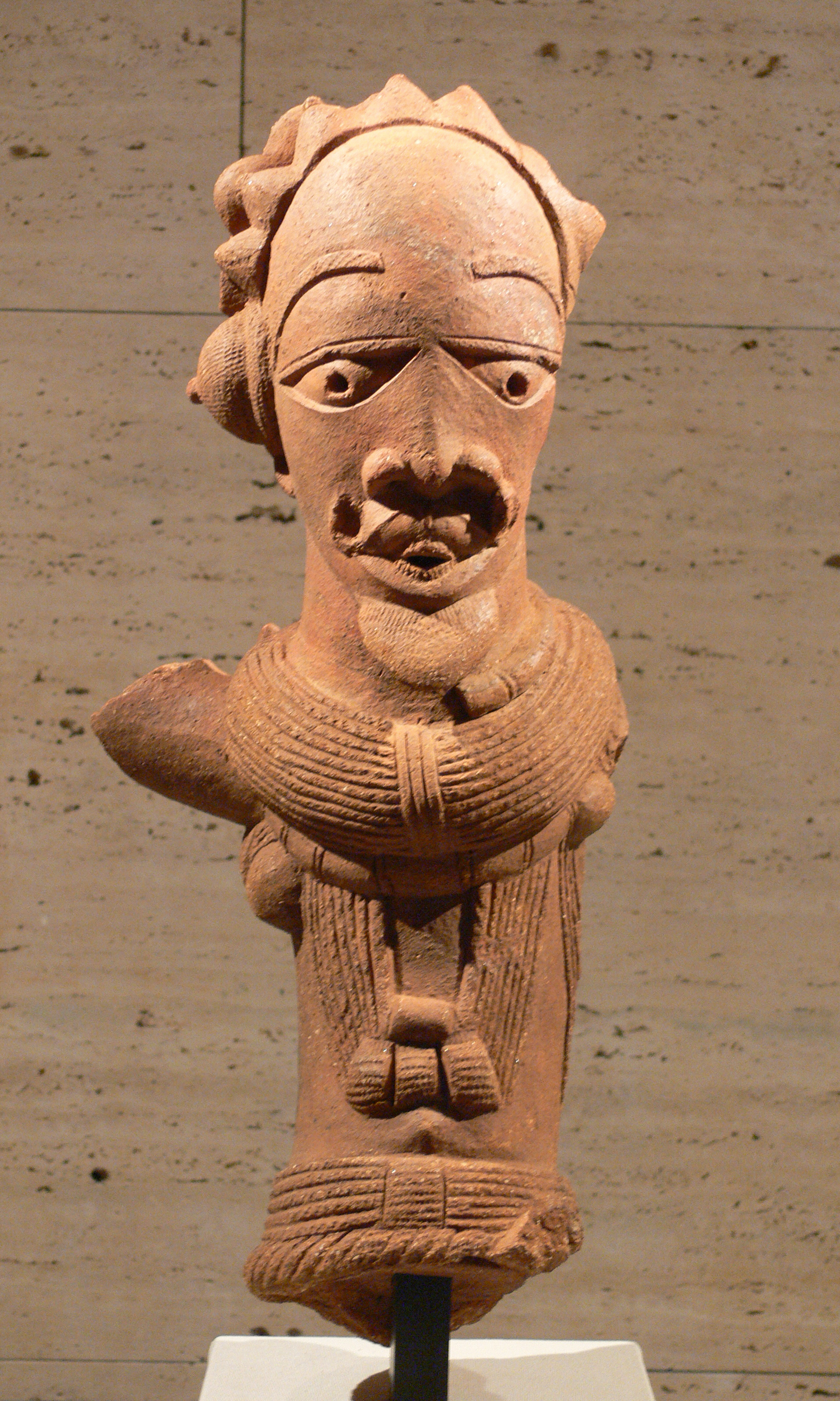Nok Terracotta Sculptures

Annotation
Nok terracotta sculptures are the earliest-known sculptures from sub-Saharan Africa, created by the Nok culture of which little is known except their ironworking and terracotta sculptures that flourished circa 1500 BCE to 1 BCE. The sculptures are figurative, with the heads or figures of humans represented, as well as animals, each unique. First discovered in Nigeria, they were coil-built, a common technique for pottery, and often hollow. Their function is not known, but they may have been used for funerary purposes, as some have been found in burials. Most that have been found are broken and fragmented, with the bodies unattached from the heads or the only remaining pieces being sherds, and are no longer smooth. Both men and women are represented. The human representations include adornments such as jewelry and elaborate hairstyles, pointing to the importance of personal adornment in the Nok culture. Others include ‘flaws,’ such as representations of people suffering from disease or paralysis featured in the sculptures. Common features of Nok terracotta work include triangular eyes, perforated/ruptured pupils, and mostly abstract features. Scholars have suggested there were likely earlier art traditions that preceded this terracotta work of the Nok, but any artifacts are unknown. Therefore, these sculptures are one of the better sources regarding the art of the Nok culture and ancient sub-Saharan Africa.
Credits
"Africa Nok Male Figure Kimbell," Wikimedia Commons, 2009, https://en.wikipedia.org/wiki/Nok_culture#/media/File:Africa_Nok_Male_Figure_Kimbell.jpg.